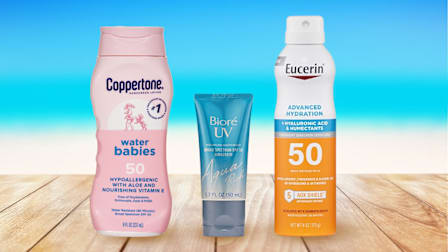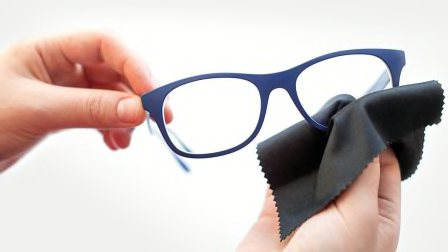Sun Protection Tips to Lower Your Skin Cancer Risk
It's never too late to start protecting yourself. From the best sunscreens to the symptoms you shouldn't ignore, we have the expert advice you need.
When you shop through retailer links on our site, we may earn affiliate commissions. 100% of the fees we collect are used to support our nonprofit mission. Learn more.

If you spent your teenage summers oiling up with Bain de Soleil in pursuit of the perfect tan, you may think it’s too late now to do anything to prevent skin cancer. “A lot of the skin damage that shows up in your later years does come from sun exposure earlier in life,” says Karen Connolly, MD, a dermatologic surgeon at Memorial Sloan Kettering Cancer Center in Basking Ridge, N.J. But sun damage is cumulative, so “how you behave in the sun now still matters.”
Over 80 percent of skin cancers are caused by radiation emitted by the sun’s ultraviolet (UV) rays. UVA rays penetrate into the deep layers of skin, weakening the collagen and elastin and causing sagging and wrinkles. The intensity of UVA rays remains constant throughout the day. UVB rays are the primary cause of sunburn and are strongest between 10 a.m. and 4 p.m.
Both types can alter skin cells’ DNA, which can lead to skin cancer. “When you’re young, the immune system repairs that early DNA damage,” says Steven Q. Wang, MD, chair of the photobiology committee for the Skin Cancer Foundation. “But over the years, DNA mutations accumulate and the ability to repair them decreases.”
That’s why it’s important to keep protecting your skin from harmful UV rays, no matter how much sun exposure you’ve already had—or even if you’ve had previous skin cancers.
Make Wearing Sunscreen a Habit
“People who consistently use sunscreen not only get fewer skin cancers, but if they do get them, they are less aggressive and can be treated more easily,” says Joel Cohen, MD, director of AboutSkin Dermatology and Aesthetics in Greenwood Village, Colo.
And sunscreen isn’t just for a day at the beach or pool. Applying a broad-spectrum sunscreen—one that protects against both UVA and UVB rays—with an SPF of at least 30 whenever you go outside should be a daily practice. “We get most of our sun damage at times we’re not thinking about it and didn’t plan for it—like running into a friend in a grocery store parking lot and talking for 15 minutes,” says Paul Nghiem, MD, chair of the department of dermatology at the University of Washington School of Medicine in Seattle.
Don't Rely on Sunscreen Alone
No product will filter out all of the sun’s rays. For example, an SPF 50 blocks 98 percent of UVB rays—and that’s only if you use it perfectly. “It’s easy to miss spots, and most people don’t apply enough,” Wang says. “So in reality, your sunscreen may not be giving you all the protection you think you’re getting.”
There are several things you can do to keep the rays from hitting your skin in the first place.
- Stay out of direct sunlight as much as possible, especially at midday when the sun’s rays are the strongest.
- Walk on the shady side of the street.
- Use a sun umbrella when you’re sitting outside.
- Wear a hat with a wide brim so that it protects not only your scalp and face but also your neck and ears (spots where dermatologists find a lot of skin cancers).
- Use protective clothing. Dress in long sleeves and pants or long skirts when you can. At the beach or pool, wear a rash guard, swim shirt, or cover-up. Then you only need to apply sunscreen to any skin that’s still uncovered.
- Pick the right fabric. Lightweight material will help keep you cool, but it can also let some UV light through. Tightly woven or synthetic fabrics screen out more UV light. You can also look for clothing with a UPF (ultraviolet protection factor) rating of 50 or higher.
Assess Your Skin Cancer Risk
Anyone, no matter their age or skin color, can get skin cancer. But not everyone’s level of risk is the same. People with light skin, blond or red hair, and lots of freckles are at an increased risk because their skin contains little melanin, the pigment in skin that offers some protection.
Having darker skin can lower the risk somewhat, but it’s no guarantee against developing skin cancer. And everyone’s risk increases as they age (even if you’ve been diligent about protection) because the older you are, the more time your skin has had to develop the mutations that can lead to cancer.
It’s also important to look at factors in addition to age and skin color, including your lifestyle and family and personal history of skin cancer. People who work outdoors or whose hobbies keep them in the sun (golfers, skiers, gardeners, tennis players) are more prone to skin cancer. “And people who’ve already had one skin cancer have a higher risk of getting another one,” Connolly says. “Because if you’ve gotten enough cumulative damage to develop skin cancer in one place, it’s likely you’ve had enough to also develop skin cancer on other frequently sun-exposed skin.”
What Skin Cancer Looks Like
Many dermatologists suggest that people do monthly head-to-toe skin self-checks. (You’ll need a mirror or a partner to help you.) Don’t forget commonly overlooked areas: the scalp, ears, underarms, under breasts, hands, the genital area, soles of feet, between your fingers and toes, and under fingernails and toenails. Here are some examples of what skin cancer may look like, but it can take other forms, so always see a doctor if you spot anything unusual.
Carcinoma

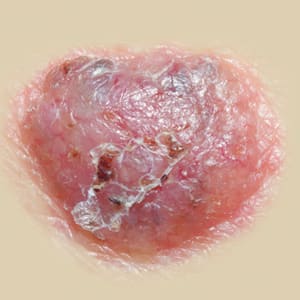
Carcinoma
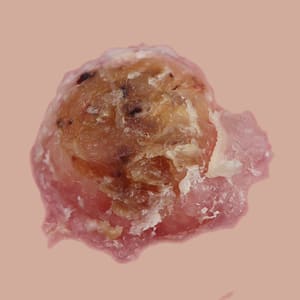
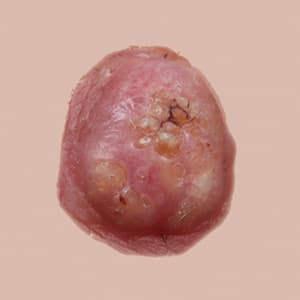
Acral lentiginous melanoma (ALM) follows a different pattern. It usually appears as a dark spot on the palms or soles of feet (below right) or as a dark band under a nail. ALM is the most common type of malignant melanoma in people with darker skin but occurs in all skin types.
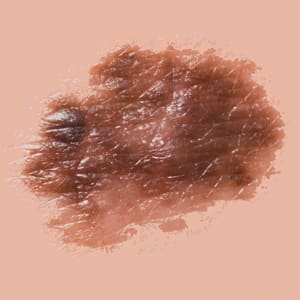

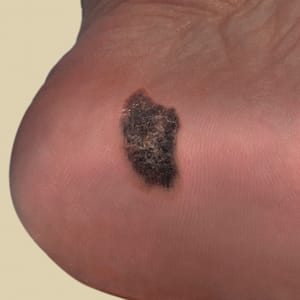
If You See Something, Say Something
There are three main types of skin cancer: basal cell carcinoma, squamous cell carcinoma, and melanoma. The first two are the most common. They usually aren’t fatal but can be disfiguring if not removed. Melanoma can be deadly, but is very treatable when caught early.
These cancers can appear in many guises and are easy to overlook. “I tell patients to look out for the ‘ugly duckling,’ the spot that stands out and doesn’t look like anything else on your body,” Connolly says. “It could be a new mole, something that looks like a pimple but won’t go away, or a spot that is bleeding or not healing.”
Have anything that’s new or looks suspicious checked by a dermatologist as soon as possible to determine if the growth is cancerous. The sooner skin cancer is diagnosed, the more easily and effectively it can be treated.
“Finding basal and squamous cell cancers when they’re small sometimes means we can treat them without surgery,” says Rebecca Hartman, MD, director of melanoma epidemiology at Brigham and Women’s Hospital in Boston. Nonsurgical treatments include cryotherapy and chemotherapy creams.
“Even melanoma has a nearly 98 percent survival rate when we catch it at a small, localized stage,” she says. Advanced cases are also becoming more treatable, thanks to recent developments in targeted therapy (which goes after specific genes) and immune therapy (which drives the immune system to seek and destroy melanoma cells).
See Your Doctor for Skin Checks
There’s no universal prescription for how often people should see a dermatologist for a full-body skin cancer check because so much depends on individual risk factors. Most dermatologists agree that everyone should get a baseline exam, preferably in early adulthood. But if you didn’t have one then, get one now.
“The dermatologist will give you an expert opinion on your personal risks and a recommendation on how frequently you need to come back,” Wang says. For people at very low risk (for example, those with darker skin or less lifetime sun exposure), that might be only once every few years. Those at very high risk (because of skin tone, family history, previous sunburns, or past skin cancers) may benefit from a professional look as often as two or more times a year.
Best Sunscreens From CR's Tests
These products provide great broad-spectrum protection and are among the top performers in our tests. For more on sunscreens, see Best and Worst Sunscreens, Best Spray Sunscreens, and Best Mineral Sunscreens.
Editor’s Note: A version of this article also appeared in the July/August 2025 issue of Consumer Reports magazine.

















